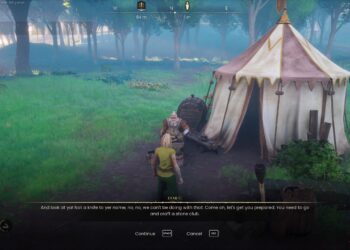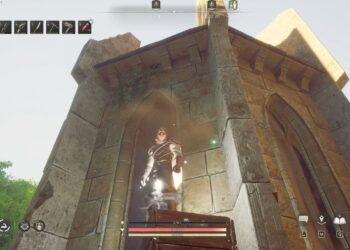In Minecraft, all gear, whether crafted from leather, iron, diamond, or Netherite, can wear out over time. After a certain amount of use (or damage in the case of armor), these items will break, taking with them all the time and resources you invested in creating them.
This is why the Mending enchantment is regarded as one of the most valuable in the game: it provides a renewable method to repair your items. However, acquiring it can be a challenge. Thankfully, this guide will outline various methods to obtain the Mending enchantment, including the most effective ones.
What Is Mending?
Mending is an enchantment applicable to all tools, armor pieces, and non-throwable weapons in the game. It will repair any durability loss when the item is equipped or held, using experience orbs to do so. The only exception is the Infinity enchantment for bows, which conflicts with Mending.
When you acquire Mending, it drastically changes your gameplay. Outside of unfortunate events like dying, any equipment with this enchantment will no longer need to be replaced. This freedom allows you to add the best enchantments to your favorite weapons without worrying about losing them.
Other repair methods also come with limitations: grindstones strip enchantments, and repeated anvil repairs can become costly due to prior work penalties. Once you’ve got your ultimate gear enchanted with Mending, you can stop stressing over maintenance and focus on your adventures.
How Do You Get Mending?
Mending is classified as a treasure enchantment, meaning it can’t be obtained from an enchanting table but rather through other means. You can find treasure enchantments either as part of already enchanted gear or in enchanted books.
When fishing, there’s a decent chance of catching an enchanted rod or bow, and with a bit of luck, it could have Mending.
Obtaining the enchantment through an enchanted book is ideal, as it allows you to apply it to whatever gear you want. However, enchanted gear (like diamond items) can also be great if they come with Mending and other helpful enchantments.
The primary sources for treasure enchantments include treasure chests, loot from pillagers during raids (in Bedrock), and trades with villagers. Villager trades are generally the most reliable method for obtaining Mending.
Where Do You Get Mending?
You can discover enchanted books or items in treasure chests located in various structures across the Overworld, underwater areas, the Nether, and The End. These locations often resemble dungeons, such as mineshafts and bastion remnants.
However, because of how loot is generated, this isn’t a consistent way to find the Mending enchantment. Even though there’s a good chance of discovering an enchanted book, finding one specifically with Mending is rare due to the large number of possible enchantments.
The same applies to enchanted gear found in chests, although the odds are slightly better since not every enchantment applies to every piece of equipment, increasing your chances of getting Mending.
Ancient Cities and Strongholds have a higher likelihood of containing enchanted books.
How To Get Mending From Villages
The most consistent way to find Mending, especially as an enchanted book, is through trading with villagers. Specifically, you’ll want to focus on Librarian villagers, who can offer up to four different random enchanting books at their highest level, with a chance for one of those to be Mending.
The reliability of this method comes from the ability to refresh their trades by breaking and replacing their Lecterns as long as you haven’t traded with them yet. This means they won’t level up, so you’ll only have access to their novice trades. Each reroll gives a chance to obtain almost any enchantment, including treasure enchantments such as Mending.
How To Reroll Trades Quickly
Continuously breaking and replacing a Librarian’s Lectern to get Mending can be tedious, particularly if you try to do it with multiple Librarians. Nonetheless, you can streamline the process:
Find Your Librarians
Start in a new village with few or no Librarians so you can control the number you want to work with. Fewer Librarians make it less complicated to manage them, but having more provides more opportunities for one of them to offer Mending.
If you plan on adding more Librarians, group all their Lecterns in one easily accessible area on the ground floor. You can relocate existing Lecterns to that spot too.
Isolate Your Librarians
After you’ve gathered all the Lecterns, guide each Librarian to that location one at a time. If they’re nearby, you can coax them along, but if they’re far away or resistant, consider using a boat or minecart for easier transport. Ensure that they cannot escape after moving them. A simple method is to dig down two blocks and confine them, then place a block above their heads to prevent other villagers from falling in.
Build and Place Sticky Pistons
Create enough sticky pistons to match the number of Lecterns you have. Sticky pistons are crafted from regular pistons, which themselves require four cobblestones, three wooden planks, one iron ingot, and one redstone dust. Attach a slimeball to each piston to turn them into sticky pistons, which you can obtain from slimes or trades with wandering traders.
Place the sticky pistons on the ground facing upwards and set a button next to each one. It’s advisable to use three sticky pistons maximum to simplify their use. When you press the button, all the pistons should extend correctly.
Place the Lecterns
Ensure you have at least three blocks of vertical space above your sticky piston setup, then position the Lecterns on top of the pistons.
Press the Button
Pressing the button should cause the sticky pistons to lift and then lower the Lecterns. This action will reset the jobs of all the associated Librarians, and when they come back down, they will be assigned different trades. By checking each Librarian, you can find one with Mending. If you’re not satisfied with the results, simply press the button again for another chance at getting what you want.
This method isn’t just for acquiring Mending or Librarians; you can adapt it for other trades by replacing Lecterns with the relevant job blocks for different Villagers.



